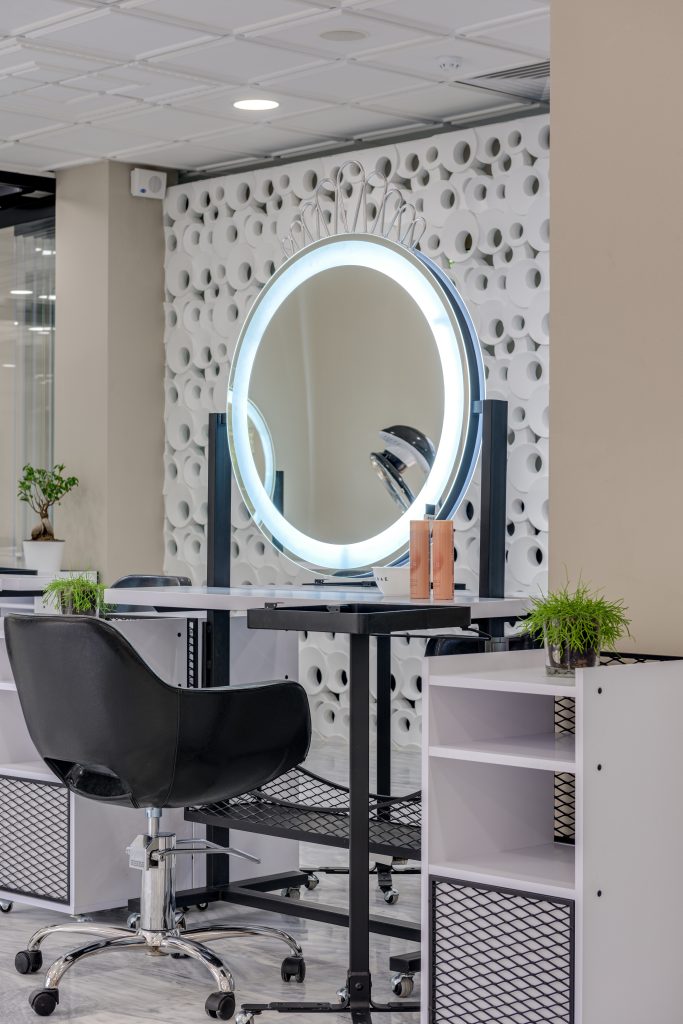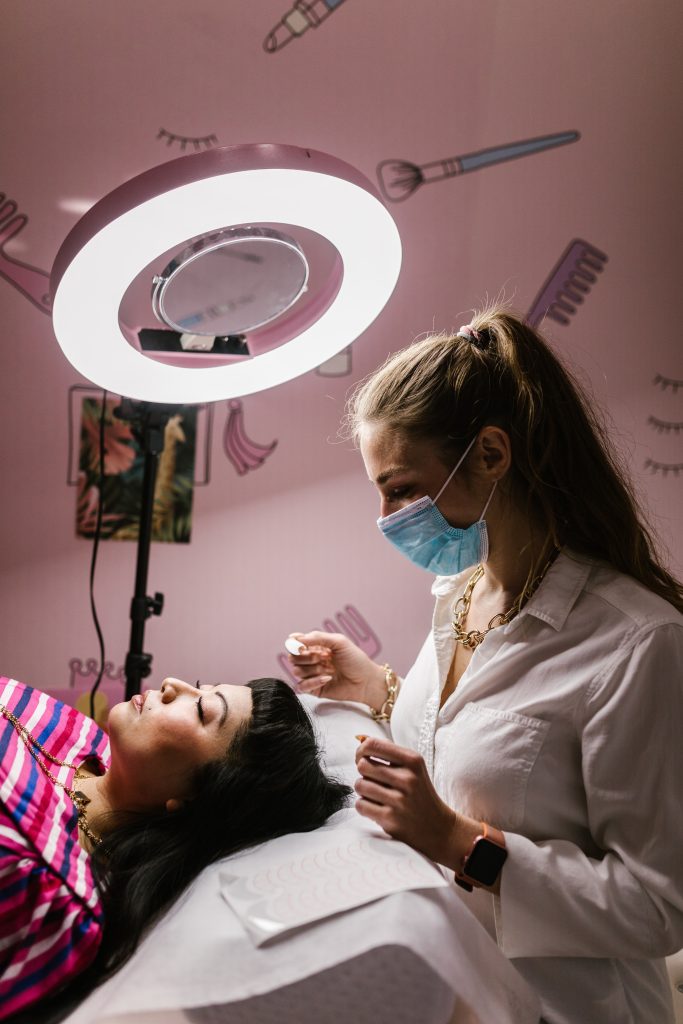What Is A LED Looped Tube?
1. Introduction
Lighting is a very important household appliance and decoration in our daily life. With the continuous improvement of people’s living standards, how to better decorate our living environment is also a problem that people are very concerned about. It is also a common pursuit of everyone to choose practical and beautiful decorative items. According to different scene needs, different decoration styles, there are various styles and styles of lights and lanterns.
LED looped tubes are also commonly known as light tubes and fluorescent tubes, and their light sources use LEDs as illuminants. The traditional fluorescent tube is also called a fluorescent light. There is a filament at each end of the light. The tube is filled with a small amount of argon and thin mercury vapor. The inner wall of the tube is coated with fluorescent powder. The gas between the two filaments emits ultraviolet rays when conducting electricity. Make the phosphor emit visible light.
LED tubes have many advantages and are generally used for general lighting, office buildings, shopping malls, hotels, schools, homes, factories and other indoor lighting.

2. Common specifications
Common types of looped tubes are: T1, T2, T3.5, T4, T5, T6, T8, T10, T12.
So what does the capital T here stand for?
To put it bluntly, T actually represents the diameter of the light. Each T is 1/8 inch. We all know that one inch is equal to 25.4 mm. Then the diameter of the T8 tube is 25.4mm.
The common ones are 60, 90, 120, and there are no standard lengths of LED tubes that can be customized according to your requirements. The traditional T5 is the national standard and has a specified length. Same size as ordinary fluorescent lights.
Common illuminances are:
8w: 30*600mm, 174 chips, 60 lm.
12w: 30*1168mm, 276 chips, 1000 lm.
15w: 30*1198mm, 342 chips, 1200 lm.
The LED looped tube is the same as the traditional fluorescent light in size and caliber. There are three lengths of 1500px, 3000px and 3750px, and its power is 10W, 16W and 20W respectively. (Inductive current) The actual power consumption of a 36W traditional fluorescent light (inductive ballast) is about 45W; an 8W LED fluorescent light is equivalent to 20W.
3. Working principle
The terminal voltage of the PN junction constitutes a certain potential barrier. When the forward bias voltage is applied, the potential barrier drops, and the majority carriers of the P region and the N region will diffuse to each other.
Since the electron mobility is much larger than the hole mobility, a large number of electrons will diffuse into the P region, which constitutes the injection of minority carriers into the P region.
These electrons recombine with holes in the valence band, and the energy obtained during recombination is released in the form of light energy, which is the principle of PN junction light emission.
4. Color temperature
Color temperature is expressed in absolute temperature K.
Different color temperatures can cause people to have different emotional reactions. Common color temperatures are mainly divided into three categories:
4.1. Warm light colors
Below the color temperature of 3300K. The color of warm light is similar to red light or incandescent light, which gives people a warm and comfortable feeling.
4.2. Warm white
Also called intermediate color, the color temperature is usually between 3300K-5300K. Although it is warm light, it has the softness of white light, giving people a pleasant, comfortable and peaceful feeling. It is suitable for shops, hospitals, offices, restaurants, restaurants, waiting rooms and other places.
4.3. Cool light
Also known as daylight color, its color temperature is above 5300K, the light source is close to natural light, it has a bright feeling, and it can make people concentrate. It is mostly used in offices, classrooms, libraries, conference rooms, painting rooms, design rooms, reading rooms, and exhibition rooms. and other places.
The higher the color temperature and the closer to blue, the lower the luminous flux. In fact, the total energy of the spectrum is not low. The lower the color temperature, the closer to red, it can be simply understood that the higher the color temperature (bluish), the shorter the wavelength (below 555nm), and the lower the sensitivity of the human eye to light. The luminous flux is related to the perception of the human eye. The less light the human eye receives, the lower the luminous flux.
Such as: T5 is an energy-saving light, most of which are close to daylight color, and T8 is an old-fashioned fluorescent light, and most of the common are warm-colored light.
4.4. Common species and their abbreviations
4.4.1 Types of fluorescent lights
In addition to the above basic understanding of the light parameters, the symbols that appear in the light tube, the symbols printed on the fluorescent tube in my country, in addition to the brand logo and serial number of each manufacturer or distributor, often appear symbols that indicate the type of fluorescent light, glass tube Diameter and color temperature, etc., their meanings are as follows:
(1) YZ stands for ordinary straight tube type fluorescent light (Y—is the first letter of “fluorescent light” Pinyin, Z—is the first letter of “straight” Hanyu Pinyin).
(2) YK stands for quick-start fluorescent light (K—for “quick start”).
(3) YS: Indicates an instant-start fluorescent light (S—is “instant start”).
(4) YG: Indicates high-frequency fluorescent lights.
(5) YDN: Indicates single-ended inner start fluorescent light.
(6) YDW: Indicates single-ended external start fluorescent light.
(7) YH: Indicates a ring fluorescent light.
(8) YPZ: Indicates self-ballasted fluorescent lights for general lighting.
(9) D: Electronic (inductive self-ballasted light symbol omitted)
The international notation method is: PS: warm-up start. RS: Snap action. S: Yin single foot starts instantaneously.
Such symbols are commonly used in foreign products: the symbol representing the diameter of the glass tube of the light is represented by TX. Among them, T refers to the tube type glass tube; X refers to the diameter of the glass tube, and X/8 is an inch. For example, T12 means that the diameter of the glass tube is 12/8 inches.
4.4.2. Commonly used symbols for the color temperature of lights
(1) RR: Indicates sunlight color (color temperature 6500K)
(2) RZ: Indicates neutral white (color temperature 5000K)
(3) RL: Indicates cool white (color temperature 4000K)
(4) RB: Indicates white (color temperature 3500K)
(5) RN: Indicates warm white (color temperature 3000K)
(6) RD: Indicates incandescent light color (color temperature 2700K)
4.4.3. Other symbols
CE: Indicates that the radio is compliant. In addition, there will be technical parameters such as rated voltage and power on the light tube. Such as: T8YZ36RR means that the power is 36W, and the light is straight. If the diameter of the glass tube is directly expressed in metric dimensions, it can also be marked as YZ36RR26, which means the diameter of the tube is 26mm. The LED fluorescent tube uses CREE and AOD super bright LED as the light source, and the shell is acrylic or aluminum alloy.

5. Advantages
(1) High brightness and high color rendering. It adopts multiple high-brightness and high-display SMD LEDs, and selects a high-transmittance PC mask.
(2) Various light colors can be made. Cool white, warm white, red light, green light, blue light, yellow light and other colors can be customized.
(3) It adopts low-voltage high-efficiency constant current drive, which is safe and free from flicker. Instant turn on, no need to start time, protect human eyesight.
(4) The aluminum alloy heat dissipation shell with light weight and good thermal conductivity can quickly dissipate the heat generated by the LED and ensure the long life of the light.
(5) Energy saving. It saves more than 85% of electricity than tungsten filament lights, and more than 50% of electricity than traditional lights.
(6) Environmental protection. No heavy metal and toxic gas pollution, materials can be recycled.
(7) No UV and IR radiation.
(8) It has strong weather resistance, is not sensitive to humidity, and has a larger range of adaptation to temperature.
(9) Prediction of light decay: After 35,000 hours of use, the brightness can still maintain 75% of the original.
(10) The service life is about 50,000 hours, which is 50 times that of the tungsten light source.
6. Application scenarios
(1) It can be used to replace ordinary circular fluorescent lights.
(2) It can be used in hotels, guesthouses, household, commercial lighting, industrial lighting, etc.
(3) It can be used for advertising lighting, such as making backlight boxes.
(4) It can be used for lighting of vehicles such as cars, trains, ships, etc.
(5) It can be used as supplementary light for portrait photography.

7. Conclusion
The above is the relevant content about the LED looped tube that the author has compiled for you. I believe that everyone has a further understanding and understanding of the LED looped tube after reading it? In fact, LED looped tubes are very common in our daily life, and different lights can present different effects and atmospheres. When purchasing, you should consider whether it is suitable for the environment, etc. according to the actual situation, and the suitable one is the best!


